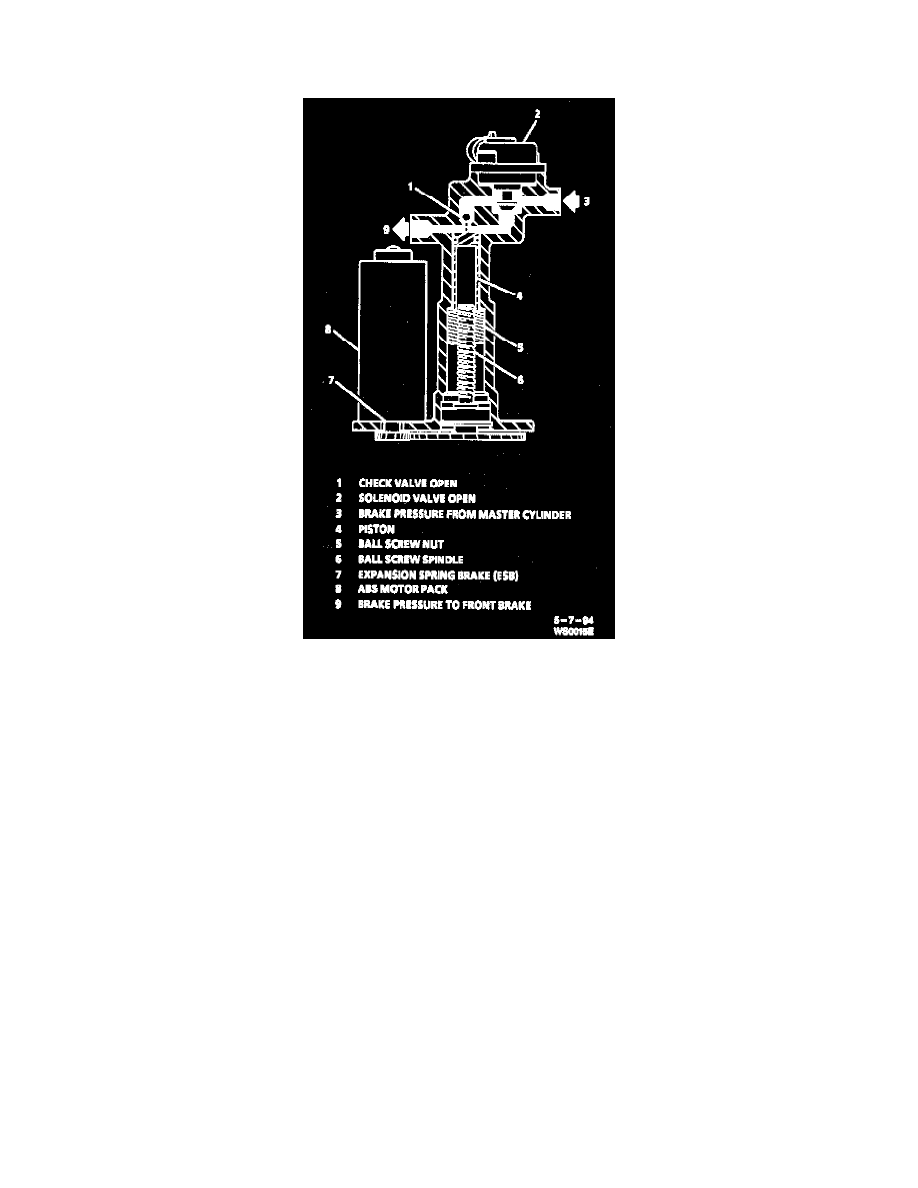Grand AM L4-144 2.4L DOHC VIN T SFI (1997)

Hydraulic Assembly: Description and Operation
Base Brake Mode
NORMAL OPERATION
Under normal operating conditions, the brake system will operate using conventional braking by means of brake pedal force, the vacuum booster, and
the master cylinder. Each front channel consists of a motor with an Expansion Spring Brake (ESB), gear driven ballscrew, piston, check valve and
solenoid. Under normal operating conditions (base brakes), the piston is held in the upmost (or "home") position. This is accomplished by turning the
screw via the motor to drive the nut upwards. Once at the upmost (or "home") position, the piston is held by an ESB. While at the upmost position, the
piston also unseats the check valve via a protrusion on the piston. Two paths are then available to transfer braking pressure to the wheel: (1) through
the modulator, around the check valve, and out to the wheel, (2) through the modulator, past the normally open solenoid, and out to the wheel.
SOLENOID OPERATION - FRONT
The solenoid in the front circuits provides an alternate brake pressure path to the wheel. With this arrangement, if the ABS were to lose power or
malfunction with the piston not in its upmost position, a redundant brake fluid path is available.
HYDRAULIC OPERATION - REAR
The hydraulically isolated rear wheel channels operate in a similar manner except both are controlled together with one motor and there is no solenoid.
While at the upmost position, the piston unseats the check valve via a protrusion on the piston. With the rear wheels, only one path is then available to
transfer braking pressure to the rear wheels through the modulator, around the check valve, and out to the rear wheels. There is no rear solenoid due to
the nature of the braking system. The majority of braking is accomplished with the front brakes. If an ABS failure were to occur that affected the
operation of the rear base brakes, a DTC would be stored and the EBCM would turn ON both the ABS indicator lamp and the BRAKE warning lamp.
